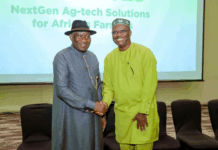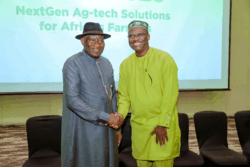By Dela Yao SESHIE
The recent announcement by the United States to withdraw USAID grants from Ghana has sent waves through the nation’s non-governmental organization (NGO) sector.
For decades, USAID has been a cornerstone of financial support for numerous initiatives across health, education, agriculture, and governance.
The sudden cessation of this funding presents significant challenges, but it also offers an opportunity for NGOs to reassess, innovate, and diversify their funding streams to ensure sustainability and continued impact.
The United States government data shown that the United States spent US$68bn on international aid in the year 2023, this was spread across several departments and agencies but USAID’s budget constitutes more than half of amounting to US$40bn representing about 0.6% of total United States annual government spending of US$6.75tn and the colossal majority of USAID money is spent in Asia, Sub-Saharan Africa
The Immediate Impact on Ghanaian NGOs
USAID’s withdrawal is not an isolated event; it is part of a broader reevaluation of foreign aid by the U.S. government. This shift has already led to the suspension of health commodity supplies in Northern Ghana, affecting healthcare delivery in vulnerable communities.
Historically, Ghanaian NGOs have relied heavily on external funding. A study from 2005 indicated that external sources accounted for 86.1% of local NGOs’ income, with international NGOs and foreign governments being primary contributors.
This dependency underscores the vulnerability of NGOs to fluctuations in foreign aid policies.
Determining the exact total funding that Ghana has received from the United States Agency for International Development (USAID) over the years is challenging due to the extensive and varied nature of the assistance provided. USAID has been a significant partner in Ghana’s development, supporting numerous projects across sectors such as health, education, agriculture, and governance.
For instance, in the agricultural sector, USAID’s Ghana Mobilizing Finance in Agriculture (MFA) initiative committed up to $261 million in loans to agribusinesses, including women-led small and medium-sized enterprises. This funding aims to enhance production in areas like seed acquisition, fertilizer procurement, and processing.
In education, USAID launched the Strengthening Accountability in Ghana’s Education System (SAGES) activity, a five-year, $60 million initiative to improve primary education service delivery. This program focuses on enhancing accountability and transparency within the education sector.
Additionally, USAID has provided substantial support in health and emergency response. For example, the agency committed $45 million to improve maternal, newborn, and child health in Ghana. Furthermore, the U.S. government, through USAID, provided over 27 million Ghanaian cedis to support drought-affected communities in Northern Ghana.
These examples illustrate the significant financial assistance USAID has extended to Ghana in various sectors. However, compiling a comprehensive total of all USAID funding to Ghana would require an in-depth analysis of financial records over the entire period of partnership.
Strategies for Financial Resilience
To mitigate the adverse effects of the USAID withdrawal, Ghanaian NGOs must explore alternative funding models and strengthen internal capacities. The following strategies can serve as a roadmap:
Diversification of Funding Sources
Relying on a single funding stream is inherently risky. NGOs should seek to broaden their financial base by exploring various avenues:
-
- Social Impact Investing: This involves attracting investors who are interested in generating both social impact and financial returns. By demonstrating measurable outcomes, NGOs can appeal to impact investors looking to support sustainable initiatives.
- Crowdfunding: Leveraging online platforms allows NGOs to raise small amounts of money from a large number of people. This approach not only generates funds but also raises awareness and engages a broader audience in the organization’s mission.
- Corporate Partnerships: Collaborating with businesses can provide access to funding, expertise, and other resources. Companies often seek to fulfill corporate social responsibility goals and may support NGOs that align with their values and objectives.
- Revenue-Generating Activities: Developing products or services related to the NGO’s mission can create a steady income stream. For example, offering training programs, consulting services, or selling handcrafted goods can provide financial support while furthering the organization’s goals.
Strengthening Local Fundraising Efforts
Building a robust local support base is crucial. NGOs can engage with community members, local businesses, and philanthropists to garner financial and in-kind support. Hosting fundraising events, initiating membership programs, and encouraging regular donations can foster a sense of ownership and commitment among local stakeholders.
Capacity Building and Organizational Development
Investing in internal capacities enhances an NGO’s effectiveness and appeal to potential funders:
-
- Governance: Establishing transparent and accountable governance structures builds trust with donors and beneficiaries alike.
- Financial Management: Implementing sound financial practices ensures that funds are used efficiently and reports are accurate, which is essential for maintaining donor confidence.
- Monitoring and Evaluation: Developing robust systems to assess and demonstrate impact can make a compelling case to funders about the effectiveness of programs.
Advocacy and Policy Engagement
Engaging in advocacy can open avenues for support and influence policies that affect the NGO sector:
-
- Government Collaboration: Working with local and national government entities can lead to partnerships, contracts, or grants for service delivery.
- Policy Influence: By participating in policy dialogues, NGOs can advocate for a more enabling environment, including favorable tax policies, grant opportunities, and capacity-building initiatives.
Networking and Collaboration
Forming alliances with other NGOs, both locally and internationally, can lead to shared resources, knowledge exchange, and joint funding opportunities. Networks can also provide platforms for collective advocacy and greater visibility.
Exploring Alternative Funding Opportunities
In light of the USAID withdrawal, it’s imperative for NGOs to proactively seek alternative funding sources. Platforms like fundsforNGOs regularly update with the latest grants and resources available in Ghana.
Additionally, the U.S. Embassy in Ghana offers programs such as the Ambassador’s Special Self-Help Program, which provides assistance to small, community-led projects.
Conclusion
The withdrawal of USAID grants undoubtedly poses challenges for Ghanaian NGOs. However, by embracing diversified funding strategies, strengthening internal capacities, and fostering local partnerships, NGOs can navigate this transition and continue to serve their communities effectively. This moment calls for resilience, innovation, and a renewed commitment to sustainable development.
E-mail address: [email protected]










